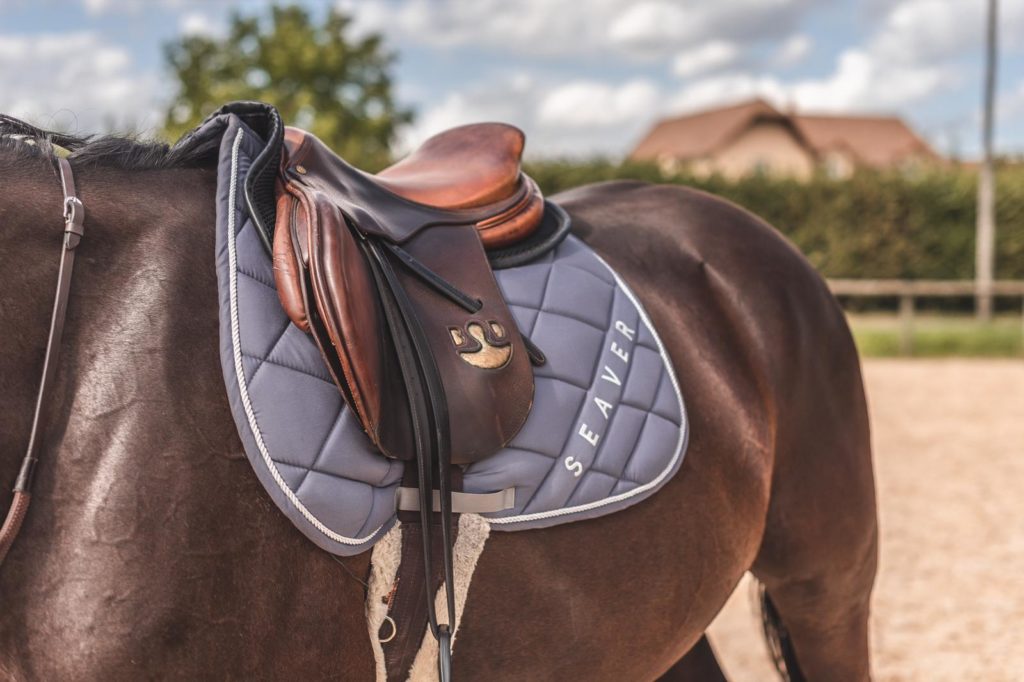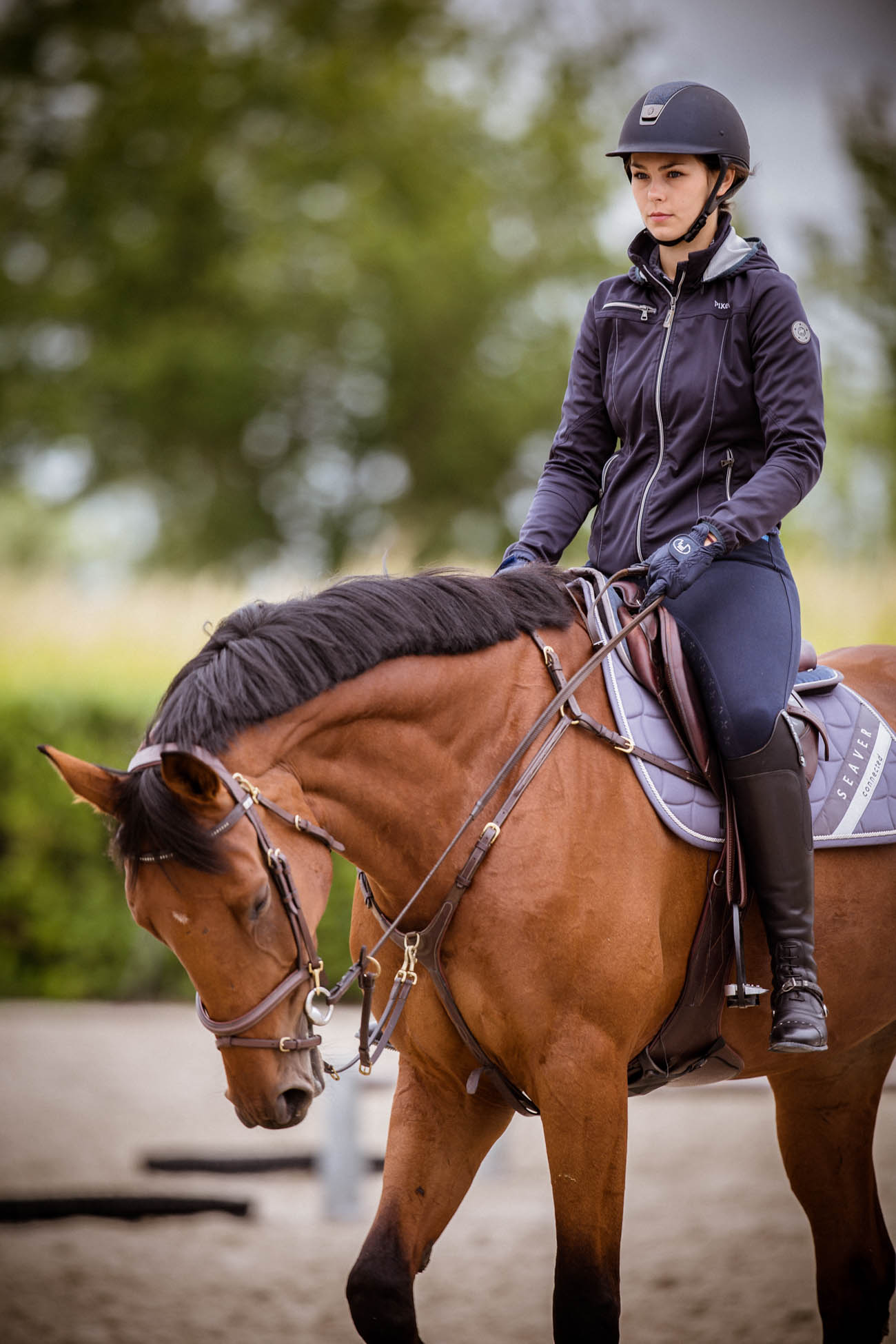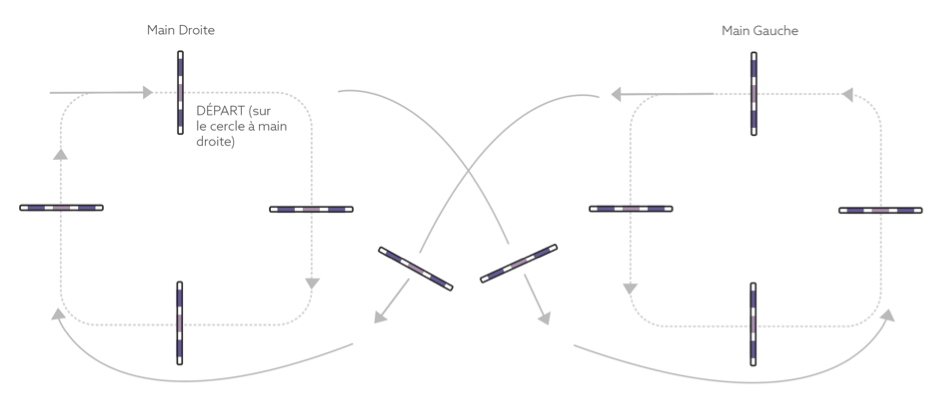Friday, November 8, 2019
Have you ever heard of November without stirrups? #nostirrupnovember in English 🙂 In recent years, November has become the month when many riders take off their stirrups for a good cause. For some, it's a moment of fear, even suffering, while for others, it's a moment of pure happiness... riding without stirrups is a must in equestrian sports. In this article, we share our tips for surviving your sessions without stirrups.

Work without stirrups is suitable for riders of all levels. It's tedious work and not without effort for the rider, but it does have some advantages advantages on the rider's position and balance but that's not all 🙂 .
Riding without stirrups allows riders to reach a new level of sensation balance and suppleness in the saddle and flexibility in the saddle, and can be used to solve effectively a variety of problemsat any level.
This work without stirrups will help the rider to become aware of their biomechanics as well as horse's biomechanics. It will teach them to maintain a sense of balance, strengthen the abdominal girdle and legs and improve his feel for the horse beneath him. This sensation is developed by learning to ride in rhythm with the horse's movements. If you can maintain your position without stirrups for an extended period, it will be even easier to stay in position with stirrups.

Finally, this practice will enable you toimprove your connection and communication with your horse.
Be careful, however, to carry out your sessions without stirrups in the best possible conditions, otherwise it could quickly turn into a nightmare and have harmful consequences for you and your horse. consequences for you and your horse..

Before dropping your stirrups, do a thorough solid warm-up. Work at all gaits to capture your horse's attention and refine your body position while your feet are still secure. Work with both hands on straight lines, circles of various sizes, serpentines - everything you need to feel confident and ready, and to keep your horse focused on you and what you want to work on. In addition, when riding without stirrups, it's important to ensure that the horse's back muscles are sufficiently ready to withstand the exercise. It is therefore preferable to wait until the end of the relaxation to take off your horse's shoes.
There's no point in trotting around sitting down for an hour. It's better to to opt for short sessions and do a 10-minute exercise in a good position than an hour-long session clinging to the reins. The key to success is repetition and perseverance. Don't forget to put your stirrups back on at the end of the exercise.
It's best to cross the stirrups in front of the saddle. This way, neither rider nor horse will be hindered, and you can quickly put them back on at the slightest problem or loss of balance. Sit on your buttocks as far forward as possible, with your shoulders your shoulders back so that your pelvis your pelvis forward. This cushions the impact of your pace, as your belly pushes forward with each stride.

To do this spread your hands, keeping your elbows close to your body and work your pelvis. Remember to lower your leg (the toad position is out 🙂 ), lower your heels (as if you were in stirrups) to help you lower your leg. Don't squeeze your knees. Be careful not to hang on to the horse's mouth if you're not comfortable. Finally, balance is worked on by forcing yourself to hold on by judiciously distributing your body weight on one buttock or the other.
Don't hesitate to put a collar (a stirrup strap, for example) around the horse's neck or hold the mane while you find your place.
This will help you distribute correctly weight and prevent any unintentional imbalance. A far-away look ensures a straight, toned back.
Remember to breathe deeply, and especially to exhale, to avoid side stitches. A good muscle oxygenation and if you're feeling a little anxious, concentrate on your breathing to take your mind off things. Above all, don't forget that the more you block yourself, the more likely you are to fall.
If you really don't feel comfortable at first, consider riding along. That way, you won't have to worry about your horse's pace or the layout. Be careful, however: this should only be done on an experienced horse and with the help of a competent longeur..
Our app is full of exercises. Here is a small selection to adapt without stirrups of course 🙂
This exercise aims to strengthen the rider's support muscles and improve balance. It will also help you maintain control in all circumstances. It will also help the horse bend around the rider's leg and stay round and collected.

1️⃣ Start with the right hand and make a few passes on the circle with bars on the ground to get your horse used to it.
2️⃣ Once your horse is listening, step out of the circle, taking the diagonal over the V-shaped ground bar (right side of the letter V). This will lead you to change circles while changing feet and moving to your left hand. Place yourself on the left-hand circle, starting with the bar at 3 o'clock. Stay on the circle for as long as you did on the right-hand circle.
3️⃣ Once your horse is listening on the left, leave the circle and take the diagonal, passing over the other bar on the ground (left side of the letter V). Change foot and hand. Return to the circle on the right, starting with the bar at 9 o'clock, and so on. Continue doing this exercise until you've completed it smoothly and correctly.
Stand up straight and make sure you always anticipate your actions. Look where you're going. Looking at the center of the circle will help you place your aids naturally. If you find it difficult to do this exercise without stirrups, do it 2 or 3 times with your stirrups and remove them when you feel comfortable.
This exercise will teach you to react quickly and non-aggressively to shorter strides. This way, you'll be more in control. It's an excellent muscle-building exerciseHorses will need to exercise their back muscles, making them rounder. They'll also learn to react more quickly to your signals.

Start with your stirrups and remove them when you feel comfortable enough.
1️⃣ Enter the line at a gallop. Be sure to keep your horse upright. Always start at a comfortable height, especially for the first 3 verticals (around 70/80 cm), to get your horse used to the device. Don't hesitate to remove the ground bar for the first few passes of the gymnastic line. Once you've mastered the device, add the bar at 20-21 meters (i.e. 5 short strides).
2️⃣ Gradually increase the height of the verticals as you go along the line. Increase the height ONLY if you and your horse are comfortable with the exercise.
Keep your horse straight and let him execute relaxed jumps. Once you've passed the last vertical, return quickly to your position, straighten up and return to your horse to take your 5 short strides. Don't forget to look away. This is a good exercise for horses who need to gain agility in combinations. Beware, however, that the exercise can be difficult at greater heights. Be vigilant and attentive.
This exercise allows you toimprove the precision of inter-allure transitions. The difficulty here is to to maintain a precise, regular line transitions without colliding.

Once again, start with your stirrups and remove them once you're comfortable.
1️⃣ Start by drawing the 4-loop serpentine in step to get used to the line.
2️⃣ Once you've mastered the layout, start the transitions each time you cross the middle line. Start the serpentine at a walk. At the end of the first loop, change to trot. Then, at the end of the second loop, return to walk and so on.
3️⃣ Start the serpentine at a trot, then canter at the end of the first loop, then trot again at the end of the second loop, and so on.
Don't forget to change hands! Be careful with the layout loops must be of equal dimensions.
What are your favorite stirrup-free exercises?
See you soon for a new article,
The Seaver team